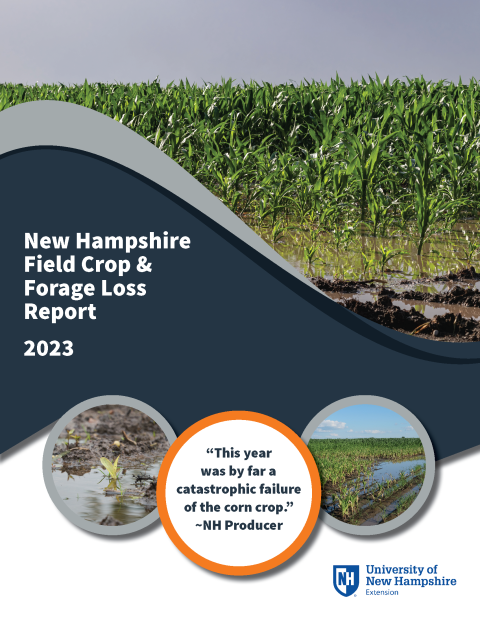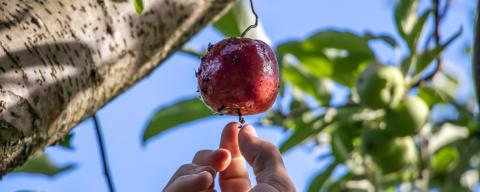
In 2023, NH farms were faced with the wettest year on record, according to the National Weather Service in Gray, Maine. This excessive rainfall greatly impacted dairy and livestock producers as well as farmers growing hay and field crops for sale. Wet field conditions prevented farms from accessing fields for grazing and harvesting forage as well as prevented hay from drying properly. These conditions also created challenges with feed storage, potential for mold and yeast growth, and reduced quality forage. These forage quality challenges can result in reduced animal health and performance for dairy and livestock farmers as well as reduced sale price for farms selling forages. For farms growing feed for dairy and livestock production, many NH producers saw increased feed costs from replacing lost forage and supplementing poorer quality forage.
To capture the impacts of the 2023 weather events, Extension conducted a Field Crop and Forage Loss survey. Producers were asked to estimate their loss in revenue from selling feed and reduced animal production, impact on grazing days, and expected additional purchased feed costs associated with forage yield and quality loss. Responses from NH producers represent over 5,000 impacted acres. The results of the survey can be viewed in the 2023 NH Field Crop and Forage Loss Report by clicking the download resource button above.
Extension Services & Tools That Help NH Farmers Grow
Newsletters: Choose from our many newsletters for production agriculture
Receive Pest Text Alerts - Text UNHIPM to (866) 645-7010

